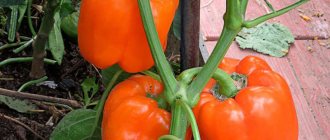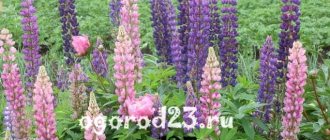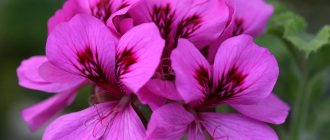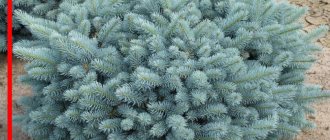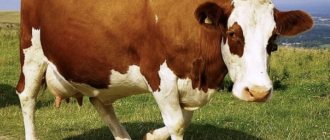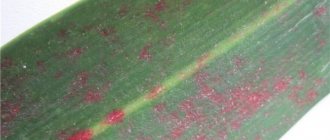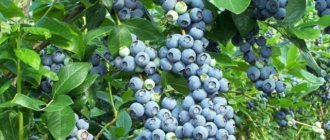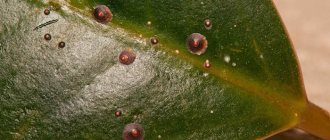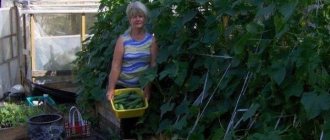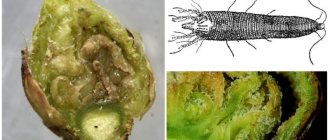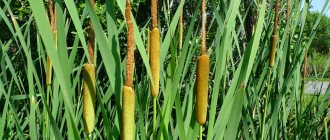Fern-like plants are the most ancient and numerous species of flora on the planet. Humanity knows more than 10,000 varieties of ferns. They are distributed everywhere. Each representative has its own shape, size, characteristic structure and method of reproduction.
Previously, ferns were huge and tree-like. In the modern world, these plants have become indoor and small. They adapt to any conditions, some have a very beautiful shape.
General characteristics of the group
Fern is a genus of spore plants that belongs to the department of vascular representatives of the flora and has 48 families, 578 genera and 10,620 varieties. They prefer damp, cold and marshy places. Most plants grow in tropical forests. Some of them are large and similar to palm trees, which reach a height of 16 meters, and their leaves are up to 4 meters long.
Places of distribution of fern-like plants:
- forest;
- marshy area;
- tree trunks and branches;
- water environment;
- mountain gorges;
- walls of houses;
- deserts;
- sides of country roads;
- agricultural grounds.
The fern is a very ancient life form, and coal is formed from its long-term deposits. The shape of the plant is similar to a green shoot with feathery leaves.
Scientists believe that ferns originated from mosses, but there is an opinion that the latter, as well as mosses and horsetails, appeared from psilophytes.
Since ancient times, there has been a myth about the fern flower. If on the holiday of Ivan Kupala a person sees a flowering plant, he will find a treasure in this place or learn how to get rich. However, this is just a legend, because in fact, the fern does not have a flowering stage.
Structural features
A fern is a perennial plant that can be either a bush or a herb.
The structure is as follows:
- roots;
- shoots;
- petioles;
- leaf plates.
The plant does not have true leaves, there are only branches that grow in the same plane. They are called vaii (pre-shoots). Looking at them, it is difficult to discern where the stem ends and the leaf forms. Fronds perform two functions: sporulation and photosynthesis.
All roots of the plant are adventitious. The primary rod does not develop, but instead a root is formed from the stem, or less often from the leaf. The shoots are varied in external and internal structure. Creeping stems are called rhizomes. They can be short or long. The stem consists of epidermis, conductive and mechanical tissue. Leaves immediately grow from the rhizome upward.
Ferns reproduce by spores. The latter are formed on the underside of leaves in sporangia.
Description of the appearance of a simple large fern leaf
Let's start, as always, with a simple and brief description. Spore-bearing flowers have a rather complex leaf structure. Large, pinnately dissected plates called fronds extend from the trunk. The leaves are most often slightly pointed in shape and rich green in color. On their inner side are hidden spores, thanks to which the plant reproduces. No one knows how many spores exist and their actual number on one sheet.
Fern in nature
Kinds
There are many varieties of ferns in nature, which are divided into ancient and modern.
There are 4 main classes:
- Psilotoides.
- Horsetails.
- Marattiaceae.
- Real ferns.
Class psilotoides
They grow on tree trunks, in rocks, and on soil with a high concentration of organic matter. The psilotoides have virtually no root.
This class of higher plants has two genera:
- Psilotes. They consist of erect, branched stems that grow from rhizomes. Conductive tissue includes phloem and xylem, which transport useful substances throughout the plant. They do not have a leaf plate, but only leaf-shaped primordia. Photosynthesis occurs in the stem.
- Uzhovnikovye. They have one leaf, which is divided into spore and upper parts. They already have rudiments of cambium and a conducting system.
Class Equisetae
Horsetail is a vascular plant that is native to Eurasia and North America. It got its name because of its resemblance to a horse's tail. It always grows like grass.
The most famous representatives of horsetail:
- giant;
- wintering;
- Schaffner.
Horsetail shoots consist of nodes and internodes, which alternate regularly and proportionally with each other. The nodes contain: a bud with scales, which replaces leaves, as well as lateral branches. Stems are responsible for photosynthesis and nutrient transfer. Horsetail has a rhizome and adventitious roots.
Class Marattiaceae
Marattiaceae are ancient higher ferns that appeared during the Lower Carboniferous period. Distributed in tropical forests, some forms are grown in greenhouses.
The roots of Marattiaceae are adventitious, and in ancient forms a mantle of roots formed around the trunk. Their fronds grow up to 6 meters long and are arranged in two rows. Young leaves look like snails.
Class of true ferns
This is the most numerous class of ferns. It has the following families: Chistoustaceae, Hymenophyllaceae, Salviniaceae and Centipedes. True ferns are ubiquitous.
Salviniaceae are aquatic ferns; they can live on the surface of reservoirs and at the bottom. They grow in the waters of Asia, Africa, southern Europe, and are also grown for aquariums. Salvinia is similar to clover, and some varieties are even edible.
Indian fern is an aquatic plant and is cultivated for aquariums. It adapts to any environment and grows in the form of a lush bush. The plant changes its color depending on the concentration of mineral components in the water. Colors vary from pale green to dark green. Its main function is to purify water from harmful substances.
Centipedes are the most numerous genus.
Representatives:
- Bubble.
A poisonous plant found on the slopes of the Eurasian mountains. It has thin long leaves that are collected in a bunch. There are such forms: bulbous and brittle. - Ostrich . Distributed in forests and on the banks of water bodies. It is one of the most beautiful ferns; it can reach a height of one and a half meters. The leaves of the ostrich are similar to the feathers of the bird of the same name, which is why it was named that way. It likes warm weather and dies off in the fall. The young process has the shape of a cam, which gradually unfolds.
- Shieldweed.
Grows in forests, mountains and hills. It grows up to one and a half meters in length, has a massive rhizome, feathery leaves from which a cup-shaped rosette is formed. There are spores on the underside of the leaf blade; they are covered with thyroid scales. That's why they were called shieldweed. There are three types of shieldweed: male, Austrian, Linnaeus. - Kochedyzhnik.
Grows in Russian forests, ravines, plains, and peat bogs. They are large plants with feathery fronds and short rhizomes. It grows as a beautiful bush up to a meter high. It forms hummocks in swamps, which is why it is called that. There are female and Chinese reddish kochedyzhnik. - Common bracken.
Distributed everywhere: in the tundra, wastelands and forests. The fern has a branched rhizome and large leaf blades up to one and a half meters in height. It can grow very quickly, so it can be difficult to eradicate. It has anthelmintic properties and a specific aroma. - Asplenium.
Fern with delicate feathery fronds. It grows on the walls of stone structures, in the cracks of stones. There are varieties: wall asplenium, northern, hair-like. - Woodsia.
A plant with thin fluffy leaf blades and a short rhizome. Woodsia's habitat is the banks of water bodies, forests and rocky areas. Varieties: woodsia elbe and multirow. - Osmunda.
Found in North America and East Asia. A plant with long shiny light green leaves and a short rhizome. There are Asian osmunda, Claytona, and royal osmunda. - Multi-row.
It has this name because its leaves are arranged in several rows. Distributed in the forests of North America, Europe and Asia. It is a plant with tight dark green leaves and a thick rhizome. There are Brown's multi-row, tripartite, and bristly varieties. - Skrebnitsa.
It grows on light and dry mountain peaks, in rock cracks and limestone cliffs. The fronds are feathery and leathery with incised tops and brown scales underneath. - Onoclea.
It has light green shiny leaves and a long branched rhizome. Distributed in wetlands of Asia and North America. - Telipteris.
It can be seen in the forests of the Northern Hemisphere. The plant is low-growing and creeping. The leaves are yellowish-green and thin, feathery in shape.
The wide variety of pteridophytes in the wild has allowed scientists to trace the evolution of plant development on Earth and understand their main importance.
Indoor ferns
There are ferns specially bred by breeders for growing at home.
Types of indoor plants:
- Platycerium.
Its leaves resemble deer antlers, which stick out in different directions, and the middle looks like a head of cabbage. - Centipede.
Its rhizome is creeping, and its leaves are dissected and pinnate. - Nephrolepis.
The most popular indoor plant has delicate, beautiful leaves that form a picturesque rosette. - Derbyanka.
Very similar to a palm tree, it consists of large and hard leaf plates. - Davallia.
It stands out for its red and shaggy rhizome, which spreads beyond the pot. - Dixonia.
A tree fern, which is first planted in a pot, and then, as it grows, it is planted in open ground, as it grows up to 6 meters in height. - Asplenium.
It has wavy leaf tips, is unpretentious and requires little care.
House ferns are easy to care for because they adapt well to their environment. These plants look beautiful and original in any interior.
Ferns with multilayered sporangium
These include the grasshopper and marattiaceae families.
Among the first to be found in Russia are:
- common grasshopper;
- Key-grass.
The latter are common in the humid tropics, often in mountainous areas:
- angiopteris;
- macroglossum;
- Marattia.
Green grass family
Uzhovnikovye, pagan - these are Russian names. The literal translation from Latin is “snake tongue.” The shape of the leaves of this family is what gave these plants their name. They are divided in two and resemble a fork. Each part performs its own function. One is vegetative (reproduction through leaves), the other is fertile (spore-bearing).
About eighty species are known, the classification of which is combined into three genera:
- zhovnik;
- moonwort;
- helminthostachys.
Uzhovnikov are one of the most ancient groups of plants. They are very different from other types of ferns in their biological characteristics and occupy a rather isolated position. Uzhovnikovye - perennial plants, sometimes evergreen, small or medium in size. They prefer loose and moist soil and open areas. However, some tropical species, like moss, live on tree trunks in the dark corners of the rainforest.
The largest representative of the family is the pendulous grasshopper . In accordance with its name, it has drooping leaves that are two or even four meters long. But there are also very small plants - only a few centimeters long.
Uzhovnikov have stems, which for the most part are rhizomes that have emerged from the ground and stand at attention. They are thick and fleshy. The only exception is helminthostachys , which has horizontal roots. As a rule, branching of stems is not observed. The stems and leaves of ferns are soft and fleshy, unlike most ferns. Hairless roots usually contain lower fungi associated with them, the so-called mycorrhizal ones.
The leaves of the grasshoppers are very distinctive. They do not have the snail-like twisting characteristic of most ferns when they emerge from the bud. Another feature of the leaves is the presence of special sheaths that obscure the bud.
Basically, the grasshoppers produce one leaf every year, less often - four. Therefore, the number of leaf scars on the rhizome allows us to judge the age of the fern. Slow leaf growth is also a feature that characterizes snake tongues. The leaves fully emerge to the surface around the fifth year of their development.
In our country, grasshoppers are distributed in pine forests, where they are most diverse. These include, for example, multifidus .
Family Marattiaceae
There are more than 60 species. Although they resemble their tree-like counterparts, they are not. Marattiaceae sometimes reach very impressive sizes and are among the largest plants on Earth. But their size is determined not by the stem, but by five- and six-meter leaves. At the base they are equipped with stipules. The stems themselves are no longer than one meter, look like potato tubers and are almost half in the soil.
Marattiaceae, like grasshoppers, are distinguished by their originality. Their giant leaves have appendages at their base that do not disappear after falling. They not only protect the plant, but also accumulate starch. They are also intended for reproduction. They have buds that are at rest. When favorable conditions occur, the buds give birth to new ferns. The stems, leaves and roots of marattiaceae necessarily contain mucus ducts. They are long channels, separate cavities or cells and serve to preserve substances that are temporarily excluded from metabolism.
Angiopteryses belonging to the Marattia family live in shady swampy forests and gorges and are very numerous. Also found along roads and on river banks. Their huge leaves are double pinnate. In pinnate leaves, the leaf blades are located along the length of the main petiole. And bipinnates are divided twice, their plates are attached along the second petioles connected to the main petiole. The main and secondary petioles have thickenings at the joints. Thanks to this feature, the petioles are similar to a bamboo stem and have a thickness comparable to the thickness of a human hand.
Most of this family became extinct. Of these living fossils, only seven genera survive today. They live in tropical areas. Marattiaceae are often bred in greenhouses.
Life cycle
Every plant on Earth has its own life cycle. In ferns, it consists of alternating generations - spore and sexual. The plant's task is to reach maturity and give new life to subsequent generations.
The asexual (spore) generation is represented by a deciduous plant that produces spores. The latter are collected in piles - sori, which are located on the underside of the leaf blade.
When spores enter a favorable environment, they give rise to a new shoot, which is the sexual generation of the plant - the gametophyte. The life cycle of ferns is closed.
The phases of fern life have the following order:
- Mature plant.
- Controversy.
- Zarostok.
- Sex cells - sperm and eggs.
- Zygote.
- Embryo.
- New plant.
An adult plant, growing, repeats this pattern to generate the next generation.
Breath
The ability to absorb oxygen from the air and release carbon dioxide is called the process of respiration in plants. This condition is necessary for them to exist. The oxygen that the fern has absorbed interacts with its organic matter, resulting in the release of carbon dioxide and water.
The fern breathes day and night. He needs this function to receive vital energy.
Nutrition
Ferns obtain nutrients through their roots and leaves. With the help of the former, the plant absorbs mineral salts and water from the soil. Plant nutrition requires microelements such as phosphorus, potassium, carbon, nitrogen, iron, magnesium, sulfur, hydrogen, zinc, copper, manganese and others.
Another nutritional process occurs through the leaves - photosynthesis. The leaves take carbon dioxide from the air, which, with the help of sunlight, is converted into organic substances that are so necessary for plant life.
During the process of photosynthesis, the fern receives starch and sugar, which are distributed to all organs.
Fern propagation
In an adult fern, spores ripen in a capsule on the underside of the leaf. Then the capsules burst and the spores fall into the soil. The wind picks them up and carries them in different directions.
The spore germinates and a prothallus with gametes is formed, which is similar in appearance to a heart. The growth is attached to the surface of the earth with the help of threads - rhizoids. Male and female reproductive organs appear in it - antheridia and archegonia, in which sperm and eggs are formed.
Water flows down the leaf and lingers in the middle of the growth; the sperm with water swims to the egg and unites with it, forming a zygote. From it the embryo of a new plant develops.
Evolution of species
Science believes that ferns appeared on earth more than 480-360 million years ago during the Middle Devonian period. Their numbers and diversity are simply amazing. Ferns begin to grow and tree-like forms appear. A more complex structure allows these species to adapt to life on land and gives them the rigidity necessary for further growth.
As a result of the significant accumulation of the remains of these plants, peat deposits began to appear, which over time transformed into coal. In subsequent centuries, favorable conditions and a humid environment appeared for the growth of ferns.
Archaeologists often find patterns of fern leaves in coal deposits on the surface of this rock and note the appearance of new forms of flora.
During the Carboniferous period, 360 million years ago, horsetails dominated. Their fossilized remains formed most of the coal. Then they were gradually replaced by other species.
Ferns of our time grow in moisture-rich tropical forests. There are herbaceous and tree-like plants, as well as vines that are similar in size to ancient ferns.
Types of ferns
Fern plants differ strikingly from each other in many characteristics - such as size and structure, life cycles and shape, etc. But no matter how different they are, because of their characteristic appearance, people call all types of these plants “ferns.” .
Few people know that this name combines the largest group of spore plants. Therefore, it is impossible to answer the question of how many species of ferns there are with absolute certainty. Approximately three hundred genera are known, which include over ten thousand species of ferns.
These amazing, unique plants are distributed all over the world. The widest variety of ferns is found in the tropics and subtropics, or, in other words, in areas with a warm and damp climate. But still, anywhere in the world you can easily find representatives of ferns of any kind.
Biological significance
Ferns produce oxygen and take part in the cycle of matter and energy on Earth. Their thickets provide food and habitat for invertebrate animals. These plants are part of natural communities and interact with each other.
Ferns have a wide range of uses:
- Serve as food. An edible variety is bracken, the young curled fronds of which are collected, dried, canned, salted, fried, and added in crushed form to seasonings and baked goods. East Asians obtain starch from rhizomes.
- Used in medicine. Kostenets has antiviral and antibacterial properties, is an antispasmodic and promotes the removal of mucus from the respiratory tract. Maidenhair plant is used for coughs and stomach pain. Bracken is used for joint diseases, prostatitis, scrofula and cough. Essential oil is produced from the centipede; it has a diaphoretic, expectorant, laxative, and choleretic effect.
- In agriculture. Azolla is used to fertilize the soil; it enriches the soil with nitrogen. Woodwardia rhizomes are used for peat formation.
- Participate in the formation of coal. It is formed from dead tree ferns and is a good fuel; varnishes, plastics, paints, perfumes, and flammable gas are produced from it.
- As indoor plants. Decorative ferns are used to decorate homes, aquariums and ponds (adiantum, nephrolepis, salvinia, marsilia).
In the modern world, some types of ferns are on the verge of extinction. If even one species disappears, it will disrupt the natural balance on Earth. To prevent this from happening, plants must be protected and preserved.
